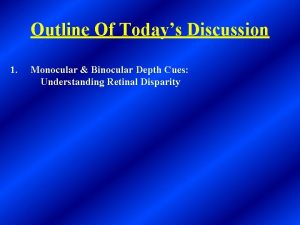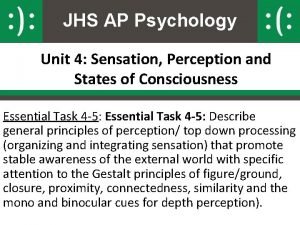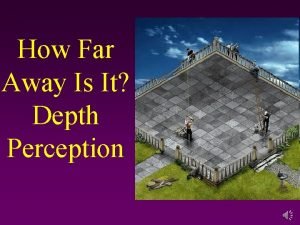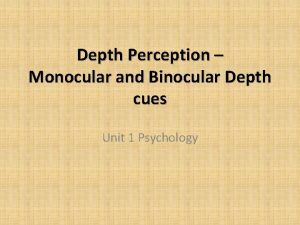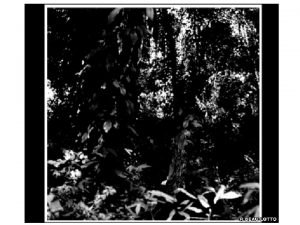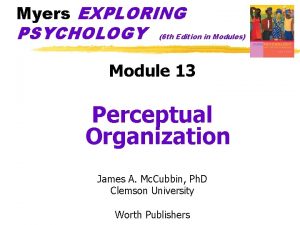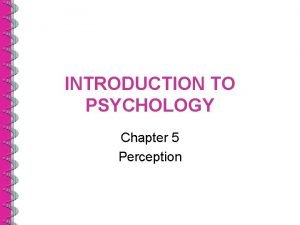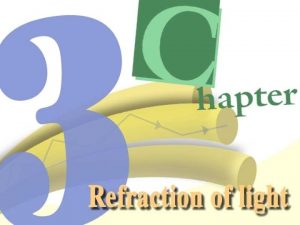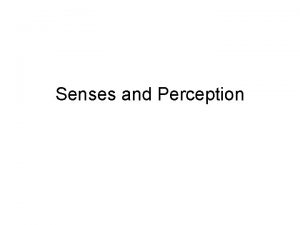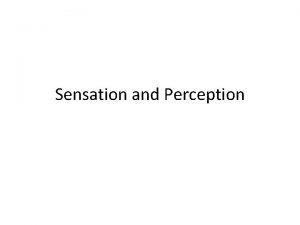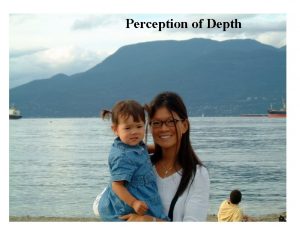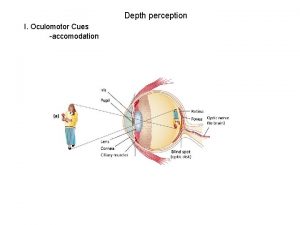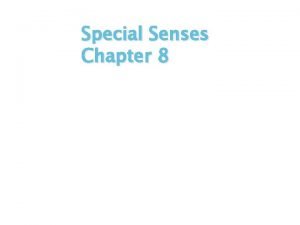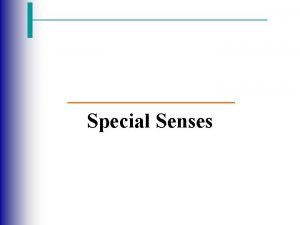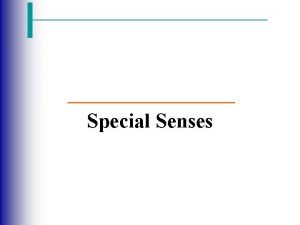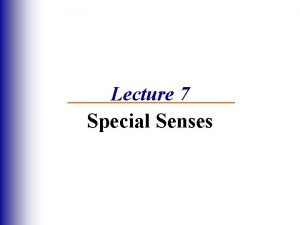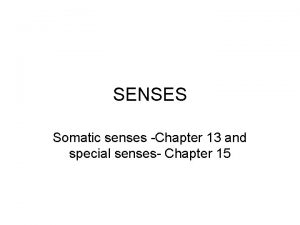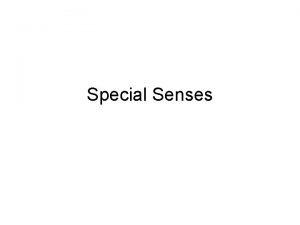Our Senses Depth Perception Requires the use of












- Slides: 12

Our Senses

Depth Perception • Requires the use of both eyes (binocular vision). • Uses Pre-learned information from the brain.

Optical Illusions • Depend on our previous interactions with how things look. • Some “tricks” illusions utilize: – Can use shadows and light. – Can use perspective and context. – Can use patterns and familiar shapes. – Can use missing details.

Our sense of touch • What we detect: – Pressure – Pain – Temperature (heat and cold) – Proprioception • (our consciousness of space and our body moving in it – includes balance)

Touch Receptors • Different touch receptors detect different sensations. (heat, cold, constant pressure, pain) – page 57 in text. • The number of receptors and the size of the fields vary in different areas of the body. • Are most densely packed in the fingertips and lips. • Least densely spaced in the back and legs.

Receptors • Types: – Touch – Photoreceptors (rods and cones) – Hearing – Taste – Smell – “stretch” – tell brain how much muscles are contracted or streched. • Located on the ends of sensory neurons

Neuron types • Sensory neurons – send information to the brain. • Motor neurons – send information back from the brain telling the body to move. • Neurons carry electrical signals back and forth. • Constant communication happens between our senses and our motor neurons.

3 main parts of a neuron • Cell body – center of operation, contains nucleus. • Dendrites – branches which receive incoming information. • Axon – a long thin extension of the cell that passes the “message” along to other neurons. It actually carries an electrical charge!

Between neurons • Synapse – the tiny space between the axon of one neuron and the dendrite of the next. • When an electrical impulse reaches the end of an axon (away), the axon releases neurotransmitters (chemicals) that communicate with the next dendrite.

Neurotransmitters • Many types – Acetylcholine – Dopamine – Adrenaline (norepinephrine) – Serotonin – Endorphins (gives the runner “high” people experience during increased physical stress – also released when eating chocolate!)

Brain development • • By 3 weeks a fetus has the brain budding. By 5 weeks it has divided into 3 main regions. Newborn is ¼ the size of an adult brain. Much is still not known about the way pathways in the brain are used and reinforced.

 What is the difference between somatic and special senses
What is the difference between somatic and special senses Special vs general senses
Special vs general senses Retinal disparity psychology
Retinal disparity psychology Retinal disparity psychology
Retinal disparity psychology Binocular disparity depth perception
Binocular disparity depth perception Cues of depth perception
Cues of depth perception Is interposition monocular or binocular
Is interposition monocular or binocular Calem
Calem Driving with night vision goggles
Driving with night vision goggles Depth perception
Depth perception Depth perception in psychology
Depth perception in psychology Refraction through a semi-circular glass block
Refraction through a semi-circular glass block The first day after the war
The first day after the war


